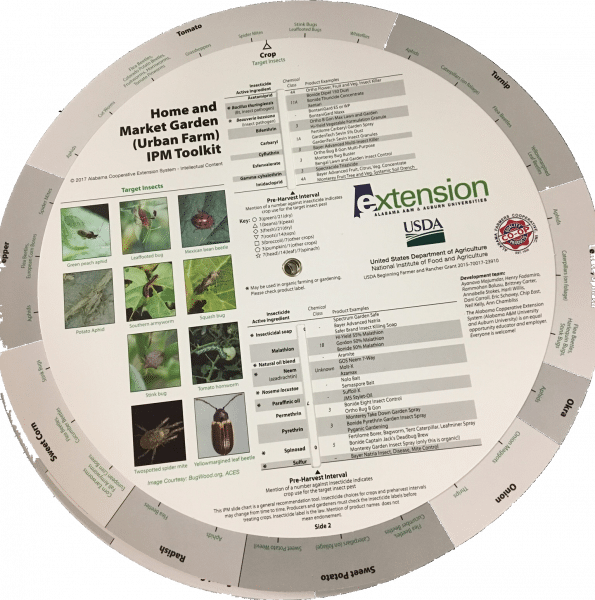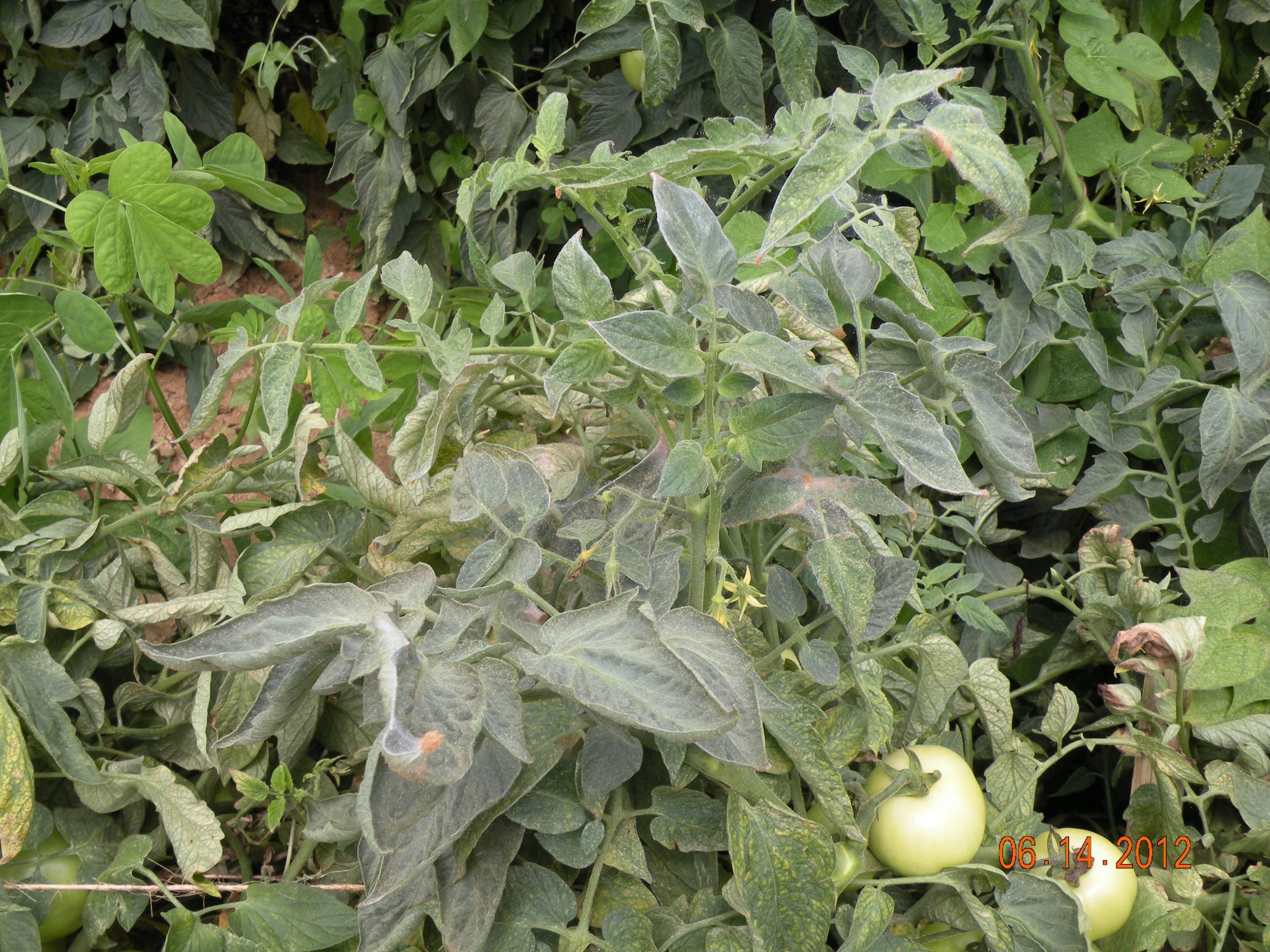Farming

The genus Tetranychus has 1,200 species with the ability to feed on 180-200 wild and cultivated host plants. Twospotted spider mites have a variety of colors ranging from green to yellow – they all have a pair of black spots on top and four pairs of legs in the adult stage. Russet mites are smaller and teardrop shaped; these do not make web. TSM is well known for rapid life cycle (5 to 20 days at 80oF) and multiple generations resulting in outbreaks within weeks of detection. Webbing over flowers, leaves, and fruits are late symptoms of TSM attack (see picture above). Twospotted mites really prefer many ornamental plants along with vegetable crops – populations may migrate between host plants making situation worse in dry weather. TSM may overwinter as adults hidden under crop residue or weedy hosts.
Scouting Method
Spider mite infestations must be detected early and managed immediately to prevent outbreaks. Spider mites are about 0.4 mm or smaller – they may look like dust particles with a naked eye. Due to their small size, good scouting practices include a magnifying lens, camera (even smartphone cameras can be used for magnification and recording), and glass vials with denatured alcohol for sampling. Under a magnifying lens, TSM may be seen moving on the underside of leaves with hundreds of eggs attached to silken webbing. Tapping leaves on a piece of white paper and then counting the moving mites is another rapid scouting practice.
Management Tactics
Cultural and mechanical practices. Proper plant care that maximize plant growth is important. Timely irrigation and nutrient management are effecting preventive tactics. Weed control around cropping areas will reduce intermigration of spider mites and prevent early infestations. Since spider mites are good hitchhikers, reducing foot traffic or machine passes through infested areas of the field can help contain limit outbreaks. Reduce mechanical operations such as mowing in hot dry weather can also reduce the spread of spider mites. In case of an imminent outbreak situation, harvest the crop timely and clean up all plant residue. In large high tunnels, shut down crop production in phases when spider mite threat is high. Natural rainfall helps reduce spider mites in open field crops.
Biological control agents. Spider mites have several natural enemies (predatory mites). Many vendors sell predatory mites in a variety of packaging. The trick to success is to release them soon after pest detection in order to suppress the harmful populations. Predatory mites are excellent choices for high tunnel and greenhouse environments where spot-treatment may be adequate instead of area-wide release. Common predatory mites include Phytoseiulus persimilis (good against TSM in humid environments), Mesoseiulus longipes (good in hot dry greenhouse environment), Galendromus occidentalis (good against nymphs and adults in hot dry open environments), and Amblyseius andersoni (a native predatory species). Some predatory mites may also feed on thrips and other small sized insects. Refer to the vendors listed at the end of this article for more information about commercially sold beneficial mites.
Chemical and organic insecticide choices. Several chemical insecticides have effectiveness against spider mites, broad mites, and rust mites. Growers should download and use the 2021 Southeastern U.S. Vegetable Crop Production Handbook. Do not use synthetic pyrethroids as they may kill off predatory mites resulting in bad spider mite outbreak. Products belong to IRAC Chemical Groups 20B (acequinocyl or Kanemite), 10 (etoxazole or Zeal)), 20D (fenpyroximate or Portal, bifenazate or Acramite), 25 (cyflumetofen or Nealta) have excellent to good effectiveness with selectivity to spider mites. Among organic choices, most products are broad spectrum insecticides with miticidal action in the form of contact action. Organic insecticides that have shown effectiveness against low populations of spider mites in open field tests include mineral oil (TriTek), parafinnic oil (Suffoil-X), and neem oil. Some other products that have spider mite on the product label include Chenopodium extract (Requiem), Isaria fumosoroseus (PFR97), Chromobacterium subtsugae (Grandevo), soluble silica or potassium silicate (Sil-Matrix), and natural oil blends (Aramite with 40% cinnamon oil and 10% clove oil).
More Information
- Twospotted spider mite. S. D. Frank and S. B. Bambara (2009). North Carolina Extension Service Bulletin ENT/ort-25.
- Twospotted spider mite. T. R. Fasulo and H. A. Denmark (2009). Twospotted spider mite. University of Florida/IFAS Bulletin EENY-150.
Predatory Mite Sources
- Arbico Organics: Mite Predators
- Rincon-Vitova Insectaries: Control of Pest Mites

Home and Market Garden Urban Farm IPM Toolkit
Home and Urban Garden IPM Slide Chart
A brand new Urban Farm IPM Toolkit is now available for urban farmers and community gardeners. This wheel slide chart has both conventional and organic insecticide listings for nearly 20 different crops. This publication also has listing of common insect pests with images that may help when scouting garden vegetables. Email azm0024@aces.edu to get your own copy or attend a vegetable IPM training event near you.
Trade or brand names mentioned are used only for the purpose of information with the understanding that no discrimination is intended and no endorsement by Alabama Extension is implied.

